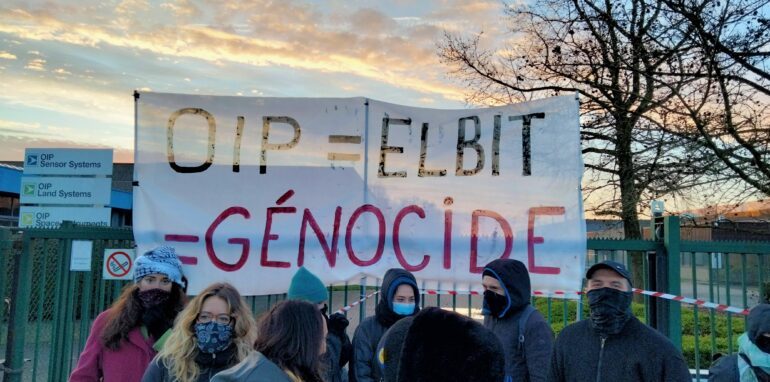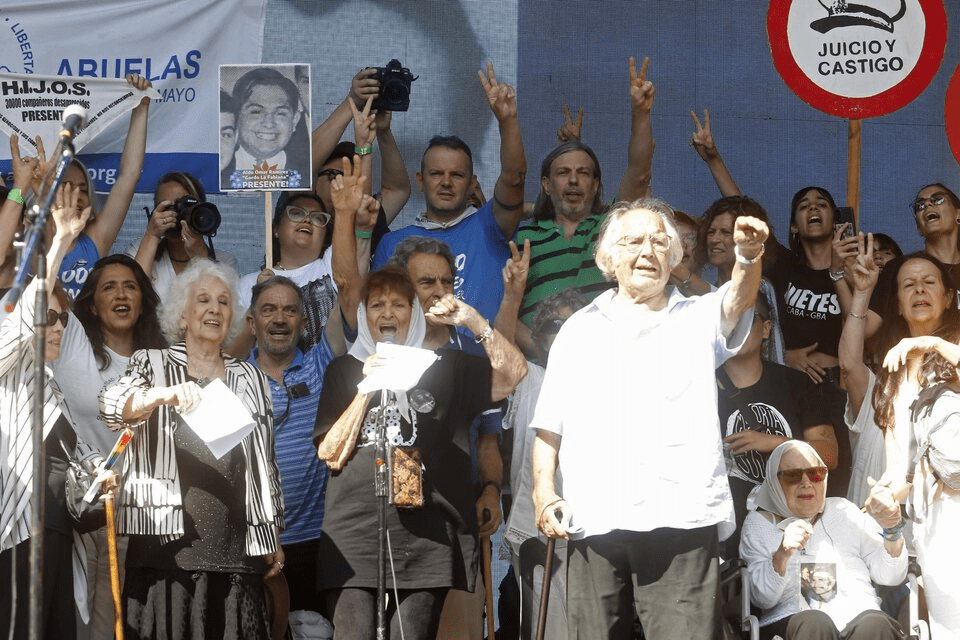Part II: Today’s cooperation for development: critics and solution proposals
In order to understand the situation today with cooperation for development we need to have a look at the biggest current issue in the economic world: globalisation.
Globalisation started around 1975, when the world’s economy encountered two big problems as a consequence of the crisis: multinational companies perceived that their margins had decreased and the developed world needed plenty of natural resources to maintain its vertiginous growth.
How could they solve these problems? The strategy they pursued was cost reduction, building market share in places where they were already established and opening up new markets.
How was the new strategy put into practice? Production was increased in countries where the costs of production are much lower and at the same time some of the richest companies were privatised, such as Telefónica in Latin America and petroleum refineries in Argentina. This had terrible consequences for the locals from these “southern countries” because they could not share the benefits that these actions were providing to the big multinationals. They remained with the same economic difficulties as before.
Globalisation reached its peak point from 1990 up to the present time, becoming an hegemonic model and the reason why the concept of development has changed.
For first time the economic market was seen as as sign of development and institutional development was viewed as a must. The UNPD development model was set: the social spending value saw new importance and also new development models were set and oriented towards the landcare. For instance, the term “sustainable growth” appeared for first time thanks to Amartya Sen’s influence. At the same time Serge Latouche’s message was adopted: learning how to live better with less. In addition it was in this time when models relating to genre development first received special attention. Many new and major steps in a short time.
After the Washington Consensus in 1989 new debates appeared: there is a need to combine state and market. We have to guide the economic growth towards a positive trajectory, as it has been the cause of inequalities and poverty. Cooperation is then is not only financial help, but also support to the social spending in order to get a worldwide welfare system.
The Paris Declaration on Aid Effectiveness in 2005, set the basis for a self-criticism and reflection time. There is a move, from a volunteering concept to a professional concept of cooperation and, as a consequence, the social awareness grows.
Currently, people in Western Europe live in an environment full of small NGOs. The main reason is that we have experienced a change from modern to post-modern times. While people previously had their own ideas within their reality, now people have a wide range of opinions depending on their context. NGO’s have shown the same change, and now each one of them works on a little piece of reality.
Some of cooperation for development’s most known criticisms
The effectiveness of the Official Development Assistance (ODA) has been widely discussed and criticised. One of the criticisms is that some countries receive up to 40% of ODA to reduce their external debt. This obviously helps but does not necessarily drive development in these country.
In other cases, the financial help have been badly used. For instance, ODA funds used to buy armament or destined to control migration flows for safety reasons: police, weapons, equipment, or diverse expenses incurred in the South-North migration borders. There is as well the so-called “militarisation of the aid” especially when a country receives aid after an army conflict. This kind of help is questioned as development assistance because often it is the donors themselves who are responsible for the conflicts.
In terms of ODA and immigration policies, we found out that many countries count the asylum concessions to people from developing countries as ODA. Granting these permits, however, only addresses the symptoms of the problem. A fuller and more effective use of aid would support actions in home countries to avoid exiles. If we look at the education sector, we might wonder if scholarships and grants can be considered as ODA. Many developing countries suffer the dreaded “brain drain”. The most talented people decide to study abroad and never come back to their home countries so they never get involved in their development. Besides, many of them end up working as well in those hosting countries, giving them a huge benefit. In 2004-05 the remittances in the developing countries were higher than the ODA itself.
In many cases, relief and emergency assistance is unfortunately counted as ODA. I say unfortunately because it is just given during an emergency situation, and the humanitarian aid does not support development in the way that it is designed to. The Development Assistance Committee (DAC) accepts this assistance (as well as many other types) as ODA but it is certainly linked to socio-economic interests. The reason is that if this assistance was not included, from 2000 to present the total ODA would be much lower.
We must have a special look at aid after a natural disaster. This is another example of failed aid. The concept of “natural disaster” is wrong. The consequences of a violent natural phenomenon are directly linked to the politic and economic situation of the country at the moment. For instance, both New Zealand and Haiti suffered an earthquake. That in New Zealand reached a 6.3 magnitude; that in Haiti 7.0. However the difference between deaths and damage was very different: the Red Cross estimated that between 45.000 and 50.000 people died in Haiti. New Zealand’s prime minister, John Key confirmed 65 deaths. Indeed, people and institutions do not react in the same way to natural disasters, there is no neutral help. Donations depend mostly of how people perceive the society in need and on the position of the media. For instance, during the floods in Pakistan each citizen received an average of 16 USD, while in Haiti, each person received an average of 160 USD. Moreover, there are so many organisations involved after a natural disaster that is hard to see what is really happening on the ground. The challenge is to let locals proceed, working with them to make their institutions stronger and giving them the tools that allow them to act by themselves if something happen in the future.
A few solution proposals
We can easily identify many proposals, I will suggest a few of them:
ODA should come out the local population, not from donors interests. An inadequate project can create needs that did not exist before in that population, or solve small problems leaving the main needs. Besides, there is a big mistake when northern countries believe that the concept of development is the one that imitates their lifestyle. The consumerist model is not the model suitable for southern countries and sometimes there is a tendency to impose it.
Many people would object to a NGO with a one million Euro project. But is important to support big projects that can improve lives for real. A huge number of smalls NGO’s with many projects of small impact, do not really change people’s lives.
Government and NGO’s need to sign agreements because otherwise we may find small NGO’s working in the same sectors and following the same aim. Among this large number of small NGO’s there is very little communication, often even when they are from the the same country.
Promoting business and employment in countries with solid institutions but weak economies.
Guiding economy towards society, especially in terms of education, genre, health (“Economy looks towards the world, policy looks towards the country”, professor Juan Iglesias from Pontificia de Comillas University).
Globalisation can be guided in a positive way and NGO’s should take advantage of it when they design their programs and projects. If a country has plenty of natural resources, the business policy should be oriented to get the country’s welfare, in a positive way, in order to reduce inequalities. Globalisation has plundered the old colonies of northern countries for their own benefit, when it should be used as a positive tool to reduce inequalities.
Multinational companies should receive special attention. Many times they are the ones that support the country’s economy, over the government itself. However it is not only the transnational corporations that are guilty but also local companies that take the same approach. The creation of a new international organisation that can control the actions of these multinational companies is necessary in order to avoid business taking all the natural resources and leaving locals with nothing. For instance, there is the dramatic situation of locals around Victoria lake, in Tanzania – the annual average total production of fish in that country is estimated at 180000 metric tons but locals suffer from malnutrition by eating just rasps and remains. All the production is exported to the U.S.A., Europe and Japan.
The organisation should as well keep an eye on the fiscal charges that those governments receivers of AOD are collecting.
Dialogue between business and NGOs should be facilitated so business leaders could let NGOs know effective ways to achieve their aims and the tools to support them. This could even promote collaborations.
As a conclusion I will finish with the most important problem: the interest of the great powers. During the 19th century and early 20th there were not such big inequalities as we have today. The bilateral aid born after the II World War represented many geopolitical and geo-strategic interests, but the problem is that they have continue until the present time. We will not have an effective ODA until we end this situation. I wonder why the Marshall Plan was so quick and effective and did not leave any European countries behind – just the opposite to what is happening with Southern countries.
Cooperation for development is good and necessary but it is ineffective. In spite of the good actions of NGO’s and governments, the interests and the markets make a stronger wave which we can not swim against. Many people say Northern countries are not interested in getting Southern countries developed because if that happens they will not be able to exploit their natural resources. Then, northern countries would collapse, because they would not be able to keep their rate of consumption. I agree and I do not see a short term solution. However we need to recognise the positive achievements and look towards the future with hope. Cooperation is very young and needs to develop and mature. The recent revolutions in Middle East and North Africa open a new window towards the idea that power is with the population and a change is possible.
![[Opinion] Is cooperation aid the way towards development? Part II](https://www.dewereldmorgen.be/wp-content/themes/twentysixteen-child/assets/images/feature_image_ful_community.jpg)










![[Opinion] Is cooperation aid the way towards development? Part I](https://www.dewereldmorgen.be/wp-content/themes/twentysixteen-child/assets/images/feature_image_horizontal_community.jpg)